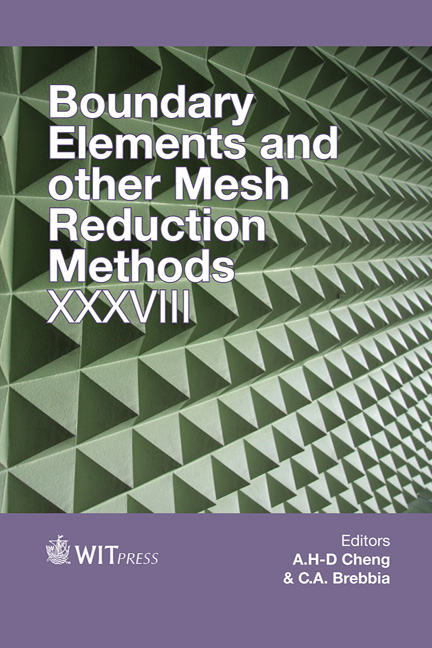Feasibility Of A Meshfree Post-processing For Boundary Element Methods
Price
Free (open access)
Transaction
Volume
61
Pages
12
Page Range
327 - 338
Published
2015
Size
546 kb
Paper DOI
10.2495/BEM380261
Copyright
WIT Press
Author(s)
A. Buchau, W. M. Rucker
Abstract
A substantial feature of boundary element methods is that a surface discretization of examined three-dimensional objects suffices to compute the solution of the underlying field problem. However, an auxiliary volume mesh is often created in practical applications to evaluate the solved problem and to apply classical post-processing methods, for instance to compute and visualize field lines or isosurfaces. In contrast, a meshfree post-processing approach is excellently suitable for boundary element methods but requires adapted and enhanced post-processing algorithms. Instead of a pre-computation of field values in a previously defined grid or mesh, field values are computed on demand only in points that are really needed to evaluate and to visualize the field. Here, two visualization techniques, the computation of field lines and the computation of isosurfaces, are shown to demonstrate the power of meshfree post-processing approaches using pure boundary element methods. In the case of field line computations, a relatively small number of evaluation points are defined during the determination of a field line based on a Runge-Kutta-Fehlberg method. On the other hand, information about data range of field values must be supplied in the complete space for isovalue search methods. In both cases, a hierarchical octree scheme is applied to group all boundary elements and evaluation points spatially and to provide information about field values in the complete space. The computation of field values is significantly accelerated by a coupling of the post-processing algorithms with the fast multipole method, an established compression technique for boundary element methods. Finally, the numerical examples show that the presented meshfree post-processing approaches enable evaluation and visualization of results of boundary element methods comparable to domain based methods like finite element methods.
Keywords
fast multipole methods, field line computations, isosurface computations, meshfree post-processing, visualization





